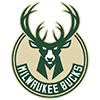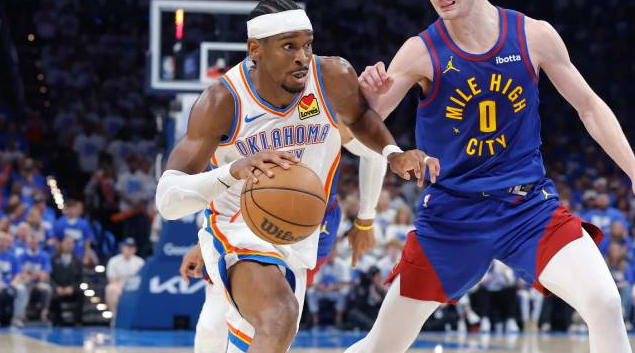Why use adjusted +/-?
Those of you that have been following my "Best Players in NBA history" threads have gotten to read and/or participate in some pretty interesting discussions. While some of the conversations have been essentially testimonials/celebrations for great players (e.g. the Tim Duncan, Magic Johnson and Larry Bird threads), others have gotten a lot more contentious. The conversations that stand out in my mind are the ones surrounding the great older centers (Bill Russell, Wilt Chamberlain and Kareem Abdul-Jabbar) as well as the recent one about Kobe Bryant. These conversations were noteworthy because they highlight some of the main approaches we tend to take when evaluating greatness.
In the center conversations, reader Jestomjaz opined that Kareem was better than Russell because Kareem had a large impact on both offense and defense while Russell was more focused on defense. Reader thepearl-673 said that we were both nuts, that Wilt Chamberlain was way better than both of them, and he used box score stats and his personal observations as evidence. And in the recent Kobe conversation, reader Nayfel said that I was underrating championships/team success and accomplishments in my valuation, and that specifically winning championships as the best player on a team should be worthy of some degree of bonus points.
In other words: "the eye test", the box score stats, rings and accolades and personal opinion about what aspect(s) of the game are most important are the primary tools by which we've traditionally had to rank players
Why use adjusted +/-?
Those of you that have been following my "Best Players in NBA history" threads have gotten to read and/or participate in some pretty interesting discussions. While some of the conversations have been essentially testimonials/celebrations for great players (e.g. the Tim Duncan, Magic Johnson and Larry Bird threads), others have gotten a lot more contentious. The conversations that stand out in my mind are the ones surrounding the great older centers (Bill Russell, Wilt Chamberlain and Kareem Abdul-Jabbar) as well as the recent one about Kobe Bryant. These conversations were noteworthy because they highlight some of the main approaches we tend to take when evaluating greatness.
In the center conversations, reader Jestomjaz opined that Kareem was better than Russell because Kareem had a large impact on both offense and defense while Russell was more focused on defense. Reader thepearl-673 said that we were both nuts, that Wilt Chamberlain was way better than both of them, and he used box score stats and his personal observations as evidence. And in the recent Kobe conversation, reader Nayfel said that I was underrating championships/team success and accomplishments in my valuation, and that specifically winning championships as the best player on a team should be worthy of some degree of bonus points.
In other words: "the eye test", the box score stats, rings and accolades and personal opinion about what aspect(s) of the game are most important are the primary tools by which we've traditionally had to rank players through the years. Each of these approaches has strengths, but also its weaknesses. For weaknesses, both the eye test and opinion on the relative importance of different game aspects are purely subjective and change from person-to-person; box score stats don't account for the entirety of the game and to some extent can be padded based on situation; and rings and accolades are heavily influenced by a player's teammates and situation, which are outside of his control. The best analysis includes some of each approach, trying to use the strengths of one method to cover for the weaknesses of the others.
But starting about a decade ago, the basketball community gained access to a completely different analytical tool: the +/- stats. The basis of these stats is very simple, similar to the method used in hockey: how many points did the team score vs. how many did the opposing team score when a certain player was playing? A positive +/- value indicates that the team was better with that player on the court, while a negative one indicates the team played worse. Simple and easy to track, to the point that player +/- is now included in the box score. You can keep track of it in your head, while watching games. And it is a very intuitive measure: you would expect a team to play better when better players are on the court, so you would expect better players to have higher +/- values.
Of course, the +/- stats couldn't stay that simple and still reach their potential as player evaluation tools. Raw +/- is heavily influenced by teammates, such that if you look at a raw +/- ranking list the role players on a really good team will be near the top, possibly even above much better players on poorer teams simply because the good teams will generally outscore their opponents more than bad teams will.
So, the next step was to try to start isolating the impact of the individual player from his team. One approach was to subtract the team's +/- when a player is OFF the court from his +/- when he's ON the court, with the idea that if the team stinks outside of that one player that difference should be stark. And for the most part, it is. This net on-court/off-court +/- measure has been utilized by sites like 82games.com and basketballvalue.com, and gives a much better indication of an individual player's value than does the raw +/-. But this still isn't ideal, because on/off +/- relies quite a bit on team rotations and bench strength. We need a more specific measure for use on individuals.
The breakthrough was to start evaluating every 5-man unit that a team uses. Every game, a team might go through about 10 or 15 different combinations of five players on the floor at once. Popcornmachine.net has been publishing this five-man unit data for each game as a 'game flow', so checking out an example game flow helps illustrate the concept. If you compile all of these five-man units over a full season, you get something that looks like this. For those who don't want to follow the link, it looks like:
Derek Fisher, Kobe Bryant, Metta World Peace, Pau Gasol, Andrew Bynum: 471 minutes, then totals up how many points that unit scores and how many they give up. Then, they do the same thing for the unit: Derek Fisher, Kobe Bryant, Matt Barnes, Pau Gasol, Andrew Bynum (303 minutes). Then Steve Blake, Kobe Bryant, Metta World Peace, Pau Gasol, Andrew Bynum (91 minutes). And so on. If you notice, you get replications of the same unit over and over with just one player changed at a time. Taken together, enough repetitions of these units with sufficient minutes allows you to isolate how much of the team's on-court success can be traced to one particular player. It requires a lot of math, but given sufficient data it can be done. And if you're REALLY serious, like an NBA front office or a professional statistician, you can make a huge database out of this information that accounts for things like competition level, crunch-time situations and blowouts and make ADJUSTMENTS to your player evaluations accordingly. And when you do, the outcome is an Adjusted Plus Minus (APM) measurement.
As a measure, APM has its own strengths and weaknesses tied into how it's calculated that shouldn't be minimized, but that discussion would be another whole conversation. So instead, let's focus on what this measure could tell us. APM is a measure that is completely independent of the other evaluation methods and that has the potential to cover all of their weaknesses. Unlike the eye test or opinion, APM is completely objective. Unlike box scores, APM can measure a player's complete impact on the whole game. There is no such thing as "empty stats" or "stat padding" or "gotta get my numbers" when it comes to APM. And the entire purpose of the stat is to isolate an individual's impact on team success from that of his teammates, which covers the main weakness of doing a ring count and accolades list.
As mentioned above, the best analysis incorporates information from all of the different analytic approaches. And this is still true when including +/- measures, as they aren't perfect. But where player ranking debates often break down is when each debater has made his particular cases for one player or another, and there's no objective framework to test their arguments. Now, with the developing +/- family of stats, we have a good way to test just how important an individual is to his team's success. This is why I'm so enthusiastic about learning and using this approach.
Around the League:
•LeBron's dislocated finger:LeBron James played last week through a head injury that some speculated could have been a mild concussion, and had two pedestrian games by his standards. Now, he has dislocated his left ring finger but plans to continue playing again. At this point you're beyond pot committed to James if you have him on your team, so if he plays you have to play him, but continue to monitor the situation.
•Lakers getting benched late: In the last week both Kobe Bryant and Andrew Bynum have been benched late in a close game by coach Mike Brown. In both instances Brown said that the decision was not personal, but was made for basketball reasons. Neither Bryant nor Bynum were happy with his benching, but if either bears watching moving forward it would be Bynum. Bynum was benched for taking an ill-advised 3-pointer and seemed to react more poorly in the media when asked about the incident. This also came less than a week after Bynum was ejected and criticized by Brown for picking up two technical fouls in a game. This likely blows over, but we now have two instances where Bynum clashed with his coach.
•Iguodala out with knee:Andre Iguodala has missed the last two games with tendinitis in his knee. He is considered day-to-day. Jodie Meeks exploded in his absence on Tuesday, knocking down seven treys on his way to 31 points. While I wouldn't look for 30 every time out, Meeks is a scorer that could put up big numbers for as long as Iguodala is sidelined.
•Grizz Gasol out with ankle:Marc Gasol missed Wednesday's game and Thursday's practice with an ankle injury, but looks as if he'll give it a go in Friday's game. As always in cases like this, check back all the way up through tip-off to make sure he's in the lineup before submitting your final roster on Friday.
•Duncan's "DNP Old": Spurs Coach Greg Popovic gave a rare glimpse into his sense of humor this week, by sitting Tim Duncan and listing it in the scorecards as "DNP, Old". The strategy is hardly a surprise, though, as Popovic has always made it his habit to sit his star players occasionally to keep them fresh for the playoffs. While this doesn't happen a lot, an unexpected "DNP Old" at the wrong time during the fantasy playoffs could be title prohibitive, so make sure you monitor the situation and have someone else ready to sub for your older Spurs if they don't play in a given night.
Big Movers in the Rotowire Fantasy Basketball Cheat sheet
•Stoudemire out 2 - 4 weeks with bulging, um, disk:Amar'e Stoudemire is out for the next two to four weeks with a bulging disk in his back, which could effectively sideline him through the fantasy playoffs. There is nothing funny about this as a Stoudemire owner, but Knicks reporter Al Trautwig's description of the injury that left out the 's' in disk was enough to make me chuckle.
•Curry out at least two more weeks:Stephen Curry joins Stoudemire in his free-fall down the rankings due to his never-healing ankle, which specialists agree he should not play on for at least the next two weeks. There have been rumblings that he could be done for the season, but at the very least he is out through the first two rounds of your playoffs.
•Martin's torn labrum: And rounding out the injured rankings droppers, an MRI on Wednesday revealed that Kevin Martin has a tear in the labral of his right shoulder. He aggravated it early in February and continued to play through it, which helps explain his wildly inconsistent play. He has now missed the last nine games and is undergoing treatment, but there is no official word yet on his return date.
•Gordon back soon?Eric Gordon moves way up the list on the strength of the news that he's back in practice and could return to game action soon. I don't have very high expectations anymore after all of his injury issues this year, but entering the season I thought Gordon was poised to make a superstar leap this season. Adding even a fraction of that potential to your fantasy team for the playoff push would be more than worth it.
New Additions
•Jordan Crawford (62% owned in Yahoo leagues): I've had Crawford in this space several times, and he's been averaging 20 points for a month now, so I have no idea how he's still available in almost 40% of leagues. If your league is one of them, be sure to pick him up.
•Gordon Hayward (54% owned): Hayward is clearly established as the primary wing scorer for the Jazz, and recently has been rounding his game into potential 15/5/5 averages. Plus, if you haven't seen it yet, Youtube Hayward's back-to-back monster blocks against the Celtics on Wednesday. Anyone who can make those plays deserves to be on a roster.
•Jason Thompson (47% owned): Thompson had missed the last two games with an ankle injury, but returned to the court on Wednesday with a solid 15-point/seven-rebound/three-block/three-steal outing. Considering he was averaging 17.6 points and 13.6 boards in the five games before the injury, he's a must-add if available in your league.
•Baron Davis:Jeremy Lin has been fighting a sore knee, which has given Davis the opportunity to start in the short term for the Knicks. Davis hasn't exactly lit up the sky with his production, and he shares the same turnover bug that has plagued Lin for much of the year, but Davis IS a legit NBA caliber starter if he gets minutes. Until Lin's knee injury is completely behind him, this makes Davis rosterable.
•Jodie Meeks: Meeks exploded as a scorer in the last game that Andre Iguodala (knee) missed. Iguodala's injury isn't considered serious, and he could return any game, but tendinitis can linger which means Meeks could earn another spot-start or two during your fantasy playoffs. Even when playing off the bench, Meeks is a legit source of treys. In his spot starts, he's capable of a lot more than that.
Best Players in NBA history: Kevin Garnett
In this section of the Lab I pick one of the top players in NBA history as voted on in this project and discuss some of his career accomplishments - in other words, what made him so great that he deserves a spot among the greatest? This week's player is Kevin Garnett, either a jack-of-all-trades/master-of-none or one of the most complete players in NBA history that also has had the biggest on-court impact of his generation...depending on who you ask.
KG is one of the most unique players that the NBA has seen. He is over 7-feet tall (though he is officially listed at 6-11, and anecdotally refers to himself as being 6-13), with mantis arms, a wiry frame and wing-like quickness. He eschewed the center slot that would be traditional for a 7-footer, and instead crafted a game that masters elements of both the inside and outside portions of the court. He is an effective interior post player, but he also has a deadly 19-foot jumper and can run the offense from the high elbow. He might play at the top of your zone on defense, but he'll also blow up the pick-and-role and challenge shots at the rim, and then grab the rebound. As you'll see in the four facts below, this versatility has led to combinations of accomplishments that have rarely or sometimes never been done before.
But more so than most players, with Garnett it really does seem to be a case where everything about him can be spun in either a positive or negative direction, depending on the perspective. By becoming the first preps-to-pros player in 20 years Garnett either pioneered a new direction for the NBA, or he opened the door to the flood of underaged and underprepared players that weakened both the NBA and the NCAA. If Garnett plays another season beyond this one, even at the league minimum, he will be the highest paid player in NBA history... but his contract was blamed for the 1999 NBA lockout and for crippling the Wolves' championship hopes. He's either a fake-thug bully on the court, or the greatest teammate and player of mind-games since Bill Russell.
To read more about Garnett's career and weigh in with your opinions, be sure to check out this week's blog.
Keeping up with the Professor
If you're interested in my takes throughout the week, you can follow me on Twitter @ProfessorDrz. Also, don't forget that you can catch me on the radio on Rotowire Fantasy Sports Today with Chris Liss and Jeff Erickson on XM 87, Sirius 210.


























